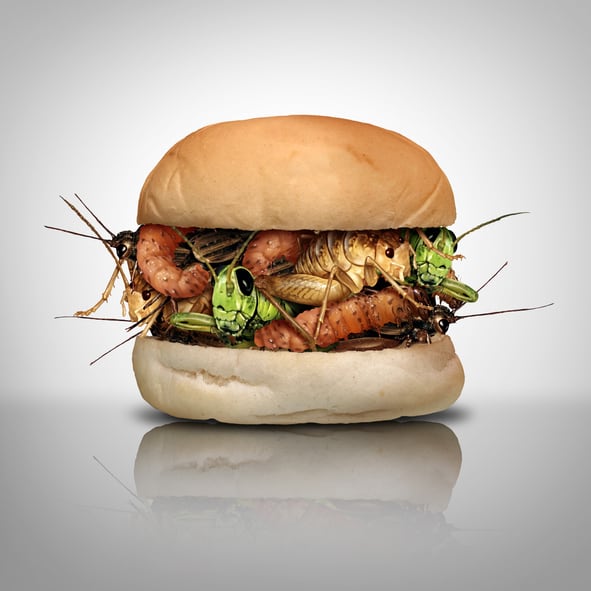In an effort to reduce reliance on limited natural resources in the production of animal feed, alternative protein sources are coming to the fore.
The microalga spirulina (Arthrospira platensis) and insect meal derived from the larvae of the black soldier fly (Hermetia illucens) have both been verified by nutritionists as viable partial replacements for soybean meal in broiler chicken diets.
While public interest in foods produced with alternative proteins is on the rise, researchers in Germany and Canada are aware that the ultimate success of insect or algae-based products ‘hinge’ on consumers’ acceptance in the marketplace.
In a new study, an international team from the universities of Göttingen and Alberta, has sought to evaluate consumer acceptance of poultry produced with these novel feedstuffs.
Alga, insect, or soy?
The researchers photographed chicken breasts from animals fed with either spirulina or insect meal and rendered the photos to imitate market-ready products one might find on the supermarket shelf.
The chicken breast products were labelled with health or sustainability claims to help the researchers further understand preference motivation for these alternative feedstuffs.
An online questionnaire was then completed by two groups of respondents (totally around 1,000 participants in total), who were asked which chicken breast product they would purchase.
In one group, participants received the information available on the packaging – including labelling and price. And in the other, additional sustainability/health information was made available concerning the feedstuffs. Which feedstuff had been used was also labelled in the second group.
Findings indicated that information on feedstuffs proved an ‘important factor’ in influencing consumer preferences, with researchers noting it is necessary to provide information on spirulina especially – since it ‘drastically’ alters the colour of the end product.
Sustainably-minded still opt for insects
Overall, participants preferred the chicken breast reared with insect meal the most, meaning more than chicken fed with spirulina and chicken fed with soy.
However, when the feedstuff was identified on-pack, only sustainability-motivated consumers continued to prefer insects as a feedstuff.
The researchers suggested that information seemed to amplify participants’ aversions and suspicions regarding the use of insects as animal feed and ‘trumps’ the role of price in choice decisions.
“Therefore, the incorporation of insects into feed for poultry should be conducted with full transparency for the end consumer and feedstuffs should be labelling in order to avoid future backlash or mistrust,” said lead researcher Dr Brianne Altmann.
“However, the increased exposure through having these products available on the market will likely increase their acceptance.”

In practice, the researchers noted that both spirulina and insect meal face market barriers.
Spirulina already has a history of being used as a feedstuff in some cultures. Today, however, it is largely cultivated as a health supplement, and is ‘much more’ expensive than soybean meal.
Insects, on the other hand, face regulatory challenges. While recently certified for use in poultry feed in the European Union, they must be reared on certified feedstuffs themselves.
“One drawback within the current legislation hindering the sustainability is that insects for feed must be reared on certified feedstuffs, putting insect rearing in direct competition for the rearing of other poultry and livestock,” Altmann explained.
“In order to increase the uptake and sustainability of alternative feedstuffs, advances in promotion, such as growth in scale and the incorporation of waste products, are urgently needed.”
Source: Food Policy
‘Information Effects on Consumer Preferences for Alternative Animal Feedstuffs’
Due to be published 1 January 2022
DOI: https://doi.org/10.1016/j.foodpol.2021.102192
Authors: Brianne Altmann, Sven Anders, Antje Risius, Daniel Mörlein




